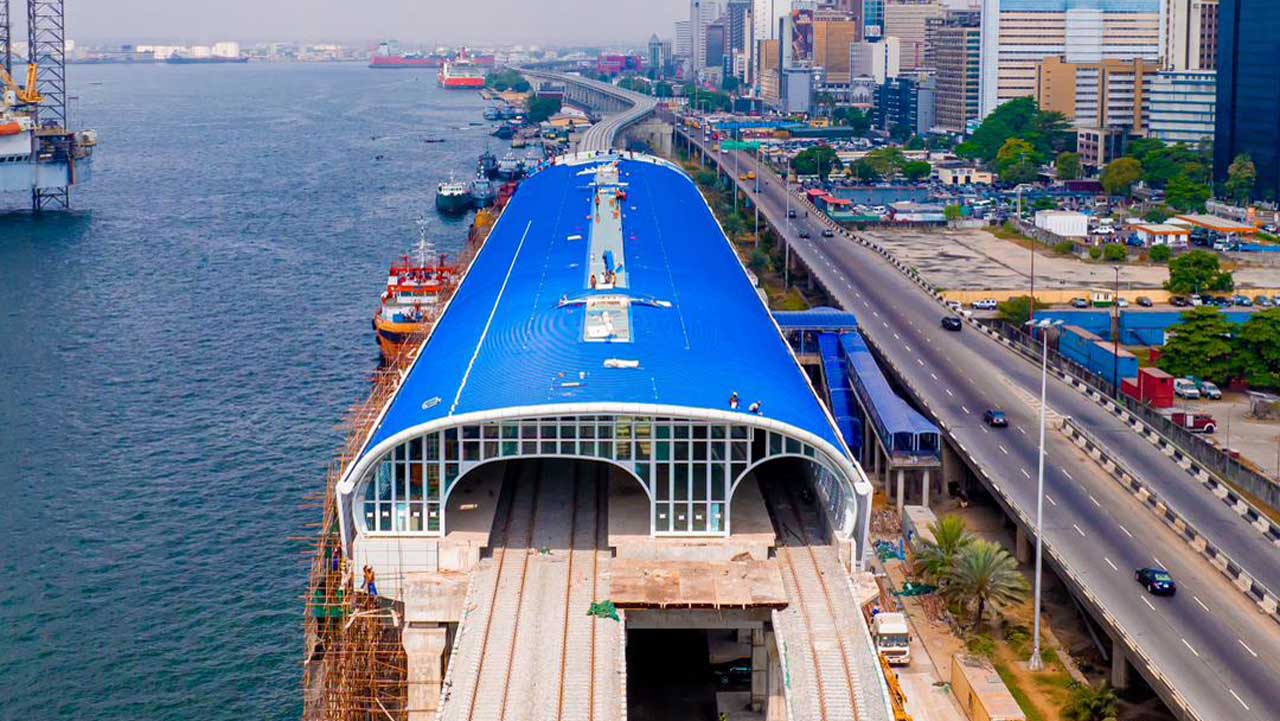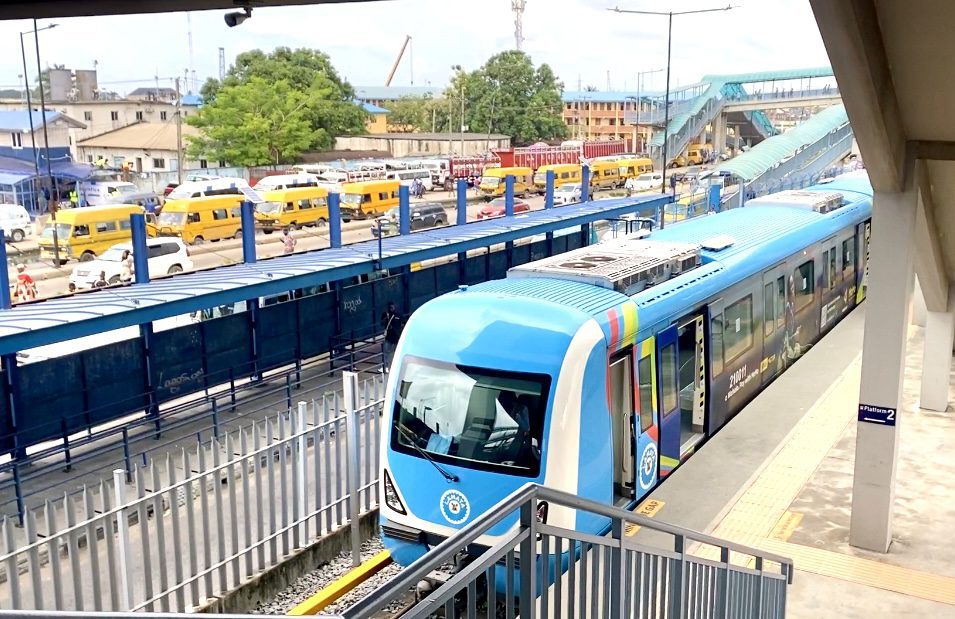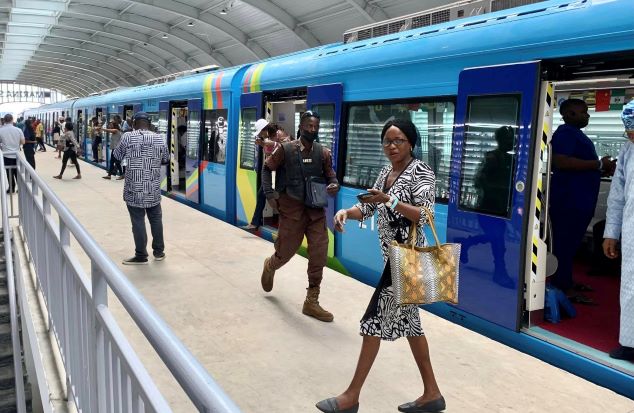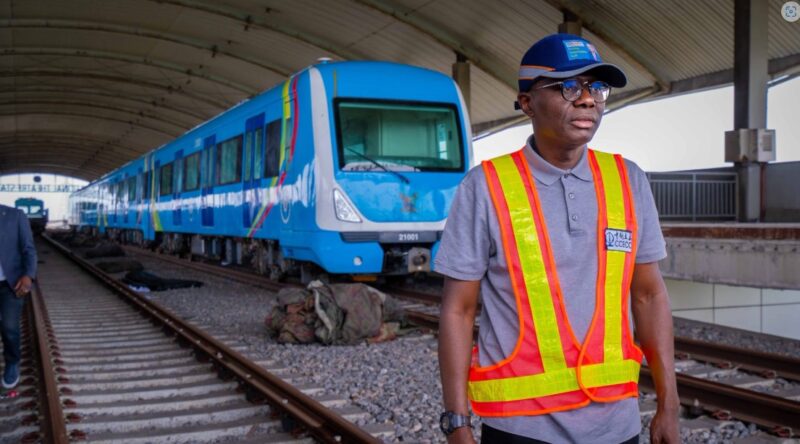The Lagos Blue Line has transported more than five million passengers since it began commercial operations in September 2023. This was disclosed by the state governor, Babajide Sanwo-Olu, while marking the system’s second anniversary. He also announced that fares on the line will be reduced by 50% starting Thursday, September 4, 2025.
Sanwo-Olu, speaking through his official X handle, said trains on the Lagos Blue Line currently run every 10 minutes and complete more than 90 trips daily, providing high-frequency connections along some of Lagos’ busiest traffic corridors.
See also: Lagos to launch ‘Omi Eko’ water transport service in October with 72 new electric ferries
The metro line forms part of the Lagos Rail Mass Transit project, developed as a backbone of the state’s urban mobility plan to meet rising transport demand in Africa’s fastest-growing megacity.

Two years of Lagos Blue Line and expansion plans
The Lagos Blue Line is part of the Lagos Rail Mass Transit (LRMT) project. The 27-kilometre route is covered in its initial 13 kilometres, from Marina to Mile 2, and was completed in 2023. The corridor has since become the preferred choice for many commuters who would like to spend less time on one of the busiest roads in Lagos.
Governor Sanwo-Olu also announced that the rail system has experienced no major incidents since opening, highlighting its role in offering safe city transit. In celebration of the milestone, the 50% discount fare will be valid across the network on September 4, celebrating both ridership milestones and system performance.


Construction is also ongoing on Phase 2, extending the rail a further 14 km from Mile 2 to Okokomaiko. The China Civil Engineering Construction Corporation (CCECC) is handling the project, which will be completed by 2026. The expansion will add six new stations: Festac, Alakija, Trade Fair, Volkswagen, LASU, and Okokomaiko. It will also bring in a 400,000-square-meter depot in Okokomaiko to streamline operations and maintenance.
There are also crucial infrastructure developments in the works. LAMATA will pull down and replace the Mazamaza Bridge, whose structural test findings indicated could not handle rail operations safely. There are two other bridges, Satellite Bridge and LASU Bridge, which are being built with an estimated lifespan of 75 years or above to ensure the system’s stability in the long run.
Growing Lagos population and rising transport demand
The Lagos Blue Line ridership is placed against the context of Lagos’ population, which has been growing exceedingly fast and now stands at more than 20 million people. Thousands pour into the state annually, yet crowding continues to be a burden to existing road networks and building mass transit facilities is the top priority.
By transporting five million passengers in two years, the Lagos Blue Line leads the way to putting an end to over-reliance on driving, eradicating traffic congestion on the roads, and providing passengers with secure journey times. Each journey by rail results in one fewer automobile or bus on the road, amounting to efficiency on the overall transportation system.
Sanwo-Olu’s fare cut is intended to further boost ridership, particularly at a point when household budgets are being tightened by overall economic pressure. Reduced costs would encourage more commuters onto the rail network while keeping the government’s commitment to transport infrastructure in the picture.
For Lagosians, the project indicates the way forward for integrated urban transport. While other lines are under consideration and the Red Line is being constructed, the state’s mass transit rail projects are poised to carry a considerable number of commuters on a daily basis in the next ten years.


The Lagos Blue Line is playing a crucial role in the state’s public transport system. Sanwo-Olu’s announcement of a 50% fare cut is both a second operating anniversary and a step towards increased accessibility. As the Lagos network expands into Phase 2 and additional corridors in advance, the system can be expected to grow increasingly to serve a city whose population continues to expand at one of the highest rates in the world.







